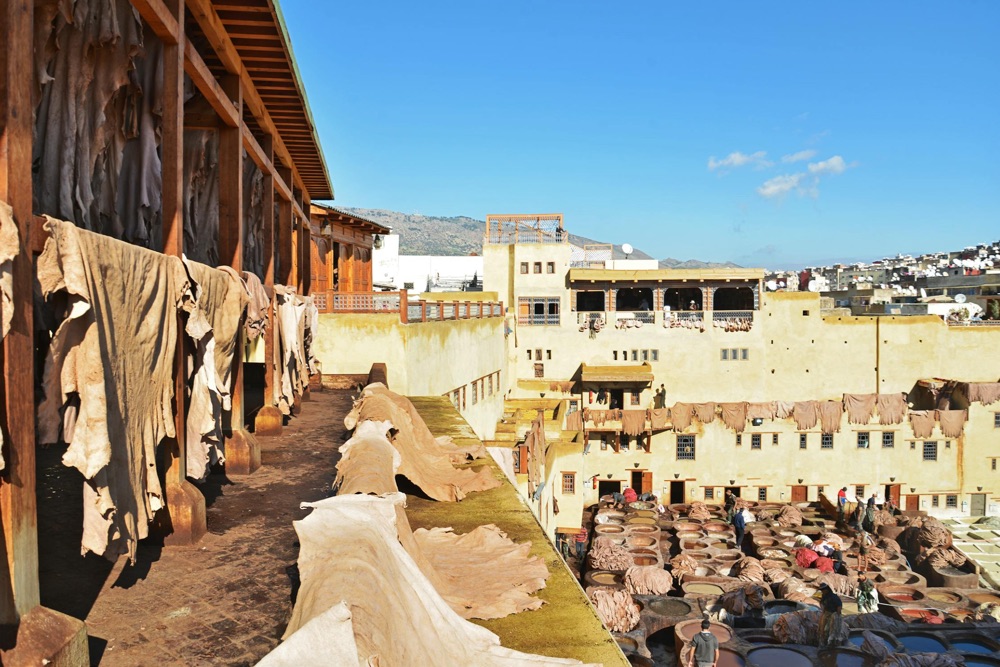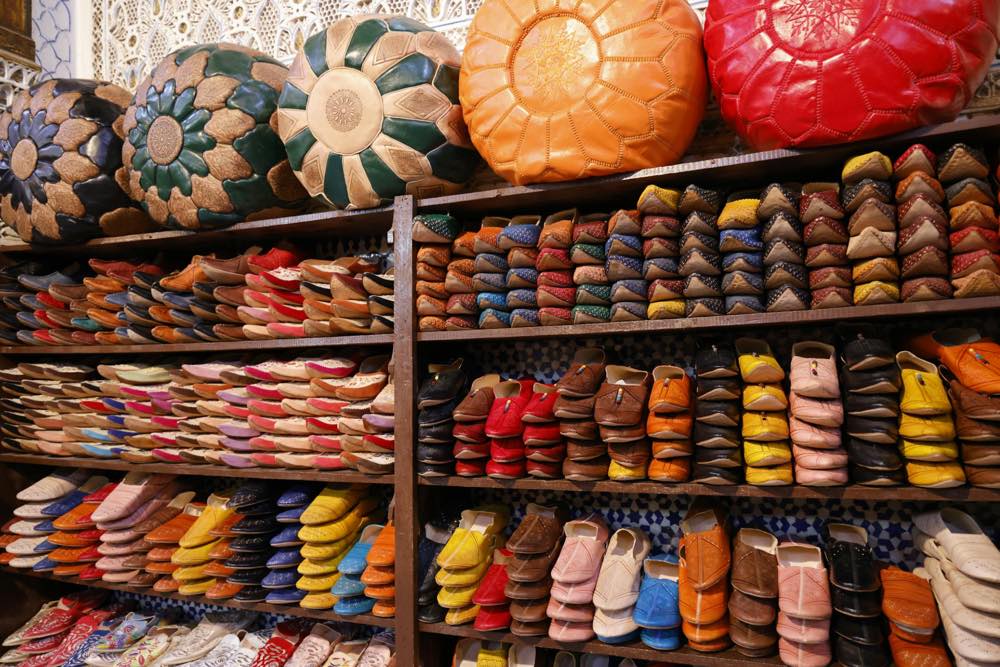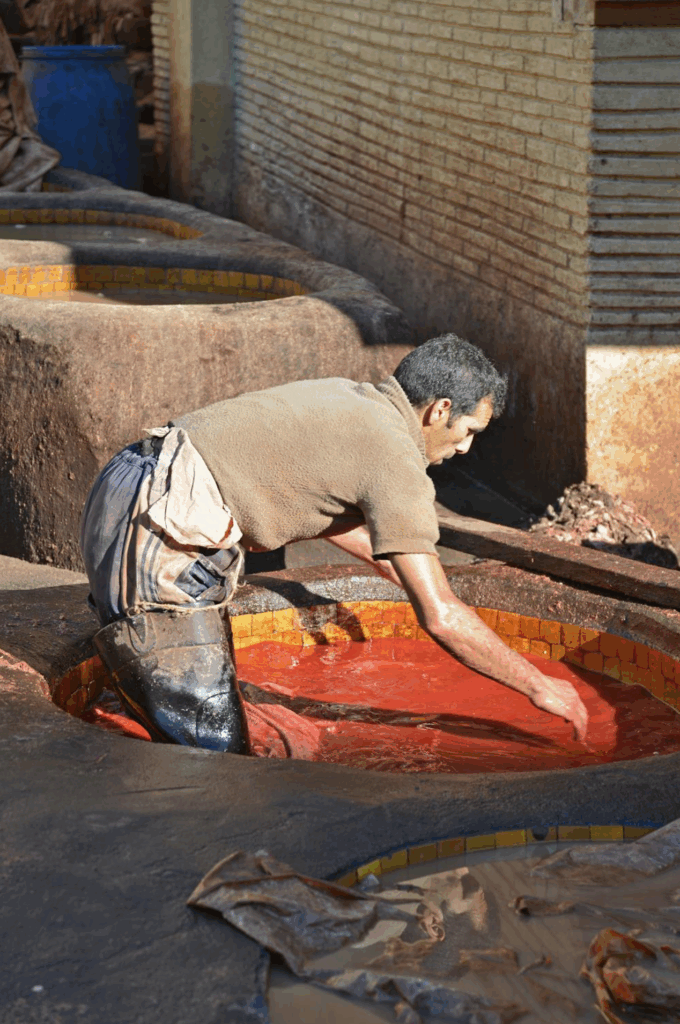
Tanneries of Chouara: Fes’s Oldest Craft and Timeless Tradition
The Tanneries of Chouara, nestled in the heart of Fes’s ancient Medina, represent one of the city’s first and most enduring professions. Dating back over a thousand years, leather tanning was one of Fes’s foundational industries, shaping its economic and artisanal heritage. Today, these vibrant, open-air tanneries continue to operate using traditional methods—where natural dyes and manual labour create some of Morocco’s finest leather goods.

Tanneries of Chouara, Fes, Morocco
Why Visit the Tanneries of Chouara?
Historic Craftsmanship: Experience Fes’s oldest profession, where traditional techniques have been passed down for generations.
Colourful Scenery: Witness the mesmerising sight of dye-filled stone vats used to treat and soften leather.
Local Artisans: See skilled workers in action, using ancient methods to process leather for high-quality Moroccan goods.
Shopping & Souvenirs: Explore nearby leather workshops offering finely crafted bags, shoes, and accessories.

Tanneries of Chouara, Fes, Morocco
The Legacy of Leather in Fes
Beyond fashion and accessories, the leather produced in Chouara Tannery has played a crucial role in Moroccan craftsmanship for centuries. The high-quality tanned leather from Fes has been used in the creation of ornate chairs, intricate book covers, and manuscripts, preserving a legacy of artistry in Moroccan history. Some of the earliest manuscripts and ancient texts were bound with luxurious Fassi leather, highlighting its significance in both academic and artistic circles.


Tanneries of Chouara, Fes, Morocco
Historical Examples of Morocco Leather Bookbinding
Qur’an Manuscripts – Many early Islamic texts were bound in luxurious Morocco leather, prized for its durability and elegance.
European Literary Works – During the Renaissance and Enlightenment periods, Morocco leather became the preferred material for prestigious bookbinding, adorning classic literary works in royal libraries.
Red Morocco Leather Bindings – Books bound in red Morocco leather were highly sought after in 17th-century Europe, often featuring gold tooling and intricate designs.
Historical Essays on Bookbinding – Morocco leather was widely used in artistic bookbinding, with Arab craftsmen pioneering elaborate designs long before European adoption.
Antiquarian Books – Even today, collectors seek antique books bound in Morocco leather, as they are considered symbols of craftsmanship and prestige.
Step Into Fes’s Living History
A visit to the Tanneries of Chouara offers more than just a visual spectacle—it’s an immersion into Fes’s cultural fabric. Whether admiring the artisanal process from a balcony, browsing handcrafted leather goods, or learning about Morocco’s historic trade, this landmark remains a symbol of craftsmanship and tradition.
Tips for Visitors
Best Time to Visit: Morning for the best lighting and viewing experience.
Entry Fee: Free to observe, but guides may charge a small fee.
Nearby Attractions: Al-Qarawiyyin University, Bou Inania Madrasa, and Fes’s bustling souks.


